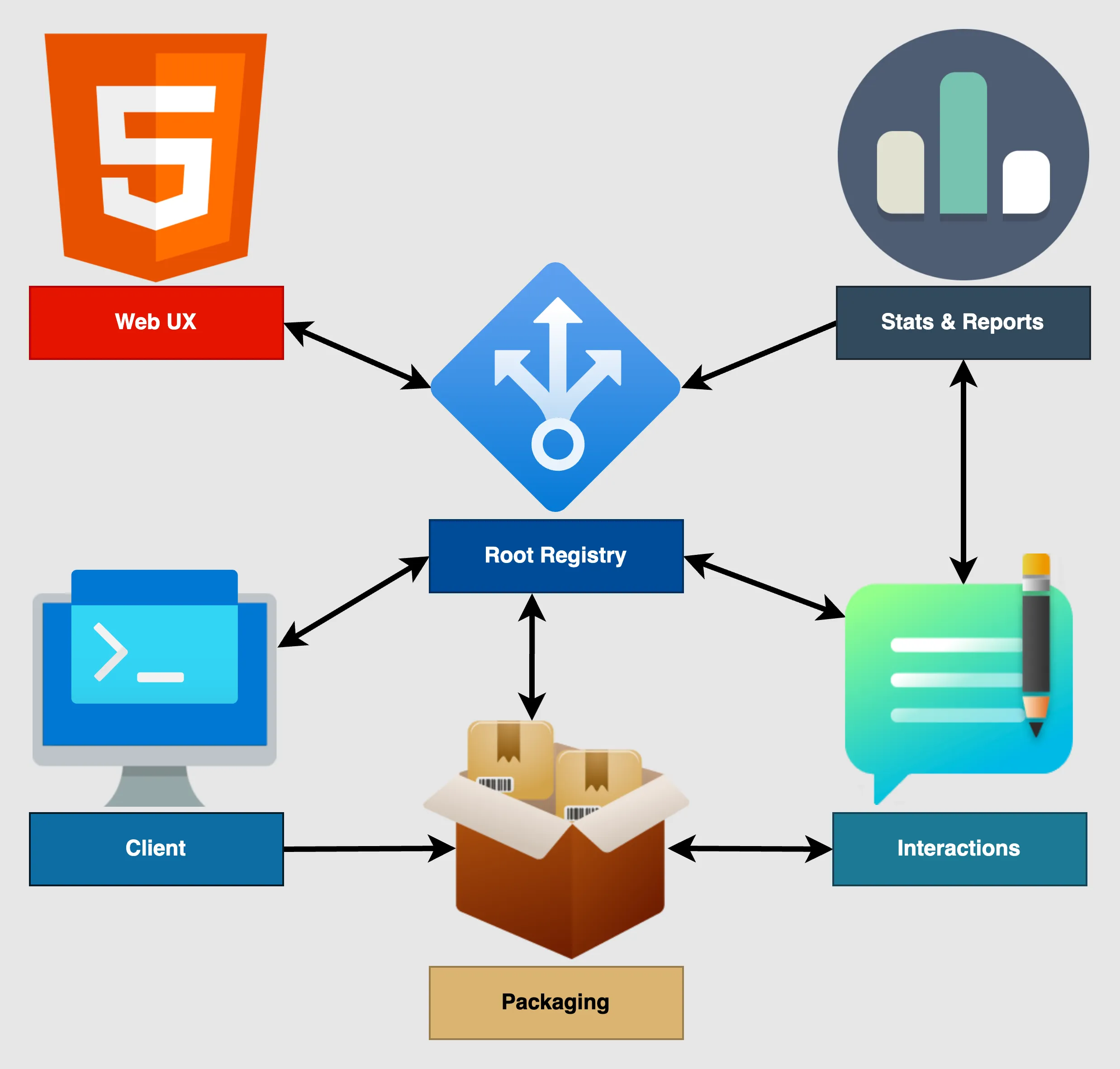Since writing about jobs to be done last month, work has continued apace on the project now code-named “PGXN v2”. This effort has encompassed investigating a number of technical questions and decisions, with a few essays and RFCs circulated amongst the PostgreSQL community, as well as a series of talks and discussions around these issues. Here’s a quick update.
RFCs and Brain Dumps
The original extensions ecosystem brain dump included a list of tools to fulfill the jobs, and these two perspectives have shaped the ensuing efforts — mainly a lot of thinking, talking, and writing on various issues. A sampling:
- A contemplation of decentralized extension publishing seeks to understand how Go centralized publishing works, and imagines a similar model for Postgres extension distribution, including auto-discovery and a few tentative ideas for namespacing improvements.
- [A meditation on extension versioning] and why, ultimately, it’s probably best to stick with semantic versioning.
- An outline for an extension metadata typology, inspired by a review of various packaging and source distribution metadata standards, and the need to group types of metadata for easier comprehension.
- An extension registry namespacing RFC follows up on the distributed publishing post to address namespacing. Many find the current state confusing, with insufficient distinction between the name of a thing to be downloaded and installed vs. the name of an extension to create or load in the database. The RFC proposing to more specifically name the distribution bundle with a URI inspired by Go module paths.
- Building on metadata typology, the PGXN metadata sketch seeks comments on a slew of ideas for expanding the PGXN Meta Spec to enable automated binary packaging, different types of extensions, system dependencies, curation, stats and reports, and more. It’s admittedly a slog, but has already produced useful commentary from the broader PostgreSQL community that will inform the next generation of metadata.
The endeavor continues apace, most recently with the creation of a public project plan that covers the work anticipated to finish examining these issues, then to design and implement the tools and services to make them a reality. It’s a lot (we’re super imaginative), but having the project sketched out across six milestones will allow for an agile, iterative approach to accomplishing our goals over the next year or so.
Next up is a document that pulls a number of these threads together in a comprehensive architectural vision and planning guide for the project, including diagrams and deeper explanations of its component parts. Watch for that soon! For now, a teaser:

Extensions Ecosystem Summit
Meanwhile, a collaboration with colleagues from Crunchy Data, EnterpriseDB, and AWS organized the Extension Ecosystem Summit on Tuesday May 28 at PGConf.dev in Vancouver, BC. This community event will assemble the most passionate and dedicated extension developers and distributors to focus on a number of key challenges and questions on the road to extension distribution nirvana. The agenda will include topics such as:
- Identity, namespacing, and uniqueness
- Distributed vs. centralized publishing
- Binary packaging and distribution patterns
- Extension developer tools
- Metadata standards for third-party dependencies, extension types, TLEs, taxonomies, etc.
- Improving the release process
- Documentation standards
- Community integration: identity, infrastructure, and support
- Services and tools to build or improve upon
We plan for a loosely organized agenda, with people breaking into working groups to examine specific problem domains.
In order to build momentum and to arrive at a solid list of topics, we’re also hosting a series of six mini-summits. Every other Wednesday community members remotely gather for a brief talk on a relevant topic, followed by discussion. The series inaugurated on March 6th with the state of the extension ecosystem (video), which attracted a strong turnout and terrific discussion.
Last Wednesday, Tembo’s own Ian Stanton talked through the inspirations, issues, and solutions that drove the creation of trunk, a key component of the Tembo Cloud architecture that’s inspiring new thinking about binary extension packaging. Once again, Postgres community participants engaged in a robust discussion of the implications and remaining challenge to making a widely-available multi-platform standard for easy-to-install and use extensions (notes, video).
The next four mini-summits remain open to all — sign up here! The tentative speaker lineup:
- April 3: Devrim Gündüz: “yum.postgresql.org and the challenges RPMifying extensions”
- April 17: Jonathan Katz: “TLE Vision and Specifics”
- May 1: Yurii Rashkovskii, Omnigres: “Universally buildable extensions: dev to prod”
- May 15: (Placeholder) [David Wheeler], PGXN: “Metadata for All: Enabling discovery, packaging, and community”
Join us! And if you’re thinking of coming to PGConf.dev, we’d love to have you at the Extension Ecosystem Summit to help shape the future of the extensions ecosystem.
